Shopping for engagement rings is never easy, especially with the amount of choice we are left with in today’s age. It can make it super difficult to determine what ring is right for you or your partner. When you decide to pop the question, there is so much anxiety about nailing the proposal. Factor in the added pressure of picking out the perfect bridal bling that they will potentially cherish for the rest of their lives, and it is safe to say that you are probably feeling like a ball of nerves.
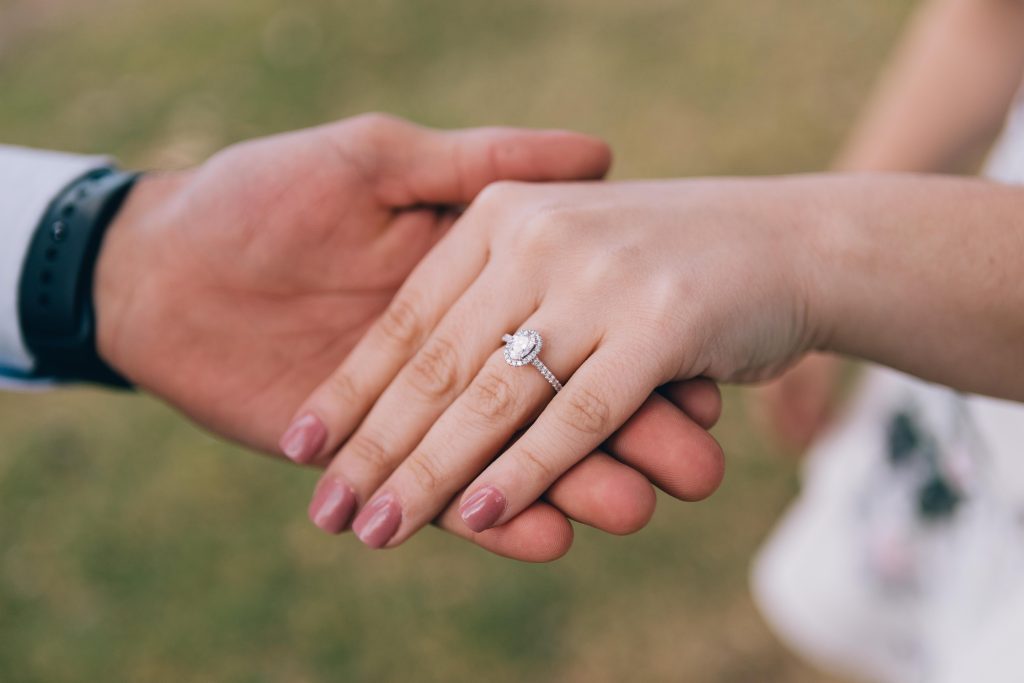
Luckily, we’ve got your back with the top things to consider when shopping for engagement rings.
What Will My Budget Be?
The be-all end-all of your engagement experience is budget, hence why it is probably the first thing you should consider. For many people that pop the question, it was a tradition that they would spend around 3 months worth of their salary on an engagement ring.
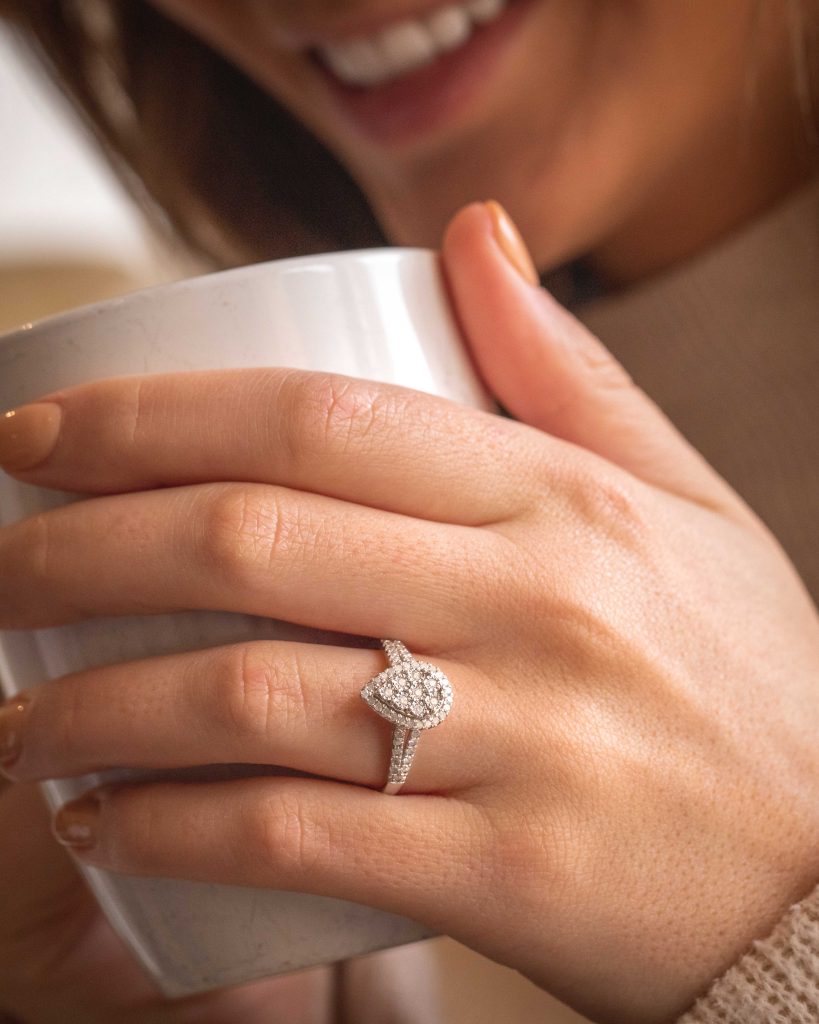
However, with salaries and the cost of living being vastly different to what they used to be, this approach to saving for an engagement ring is considered somewhat outdated. Budgets are different for everyone and it’s important to go by your instincts. Avoid spending money you don’t have and even consider by now pay, later options if that will help you avoid extra pressure.
What is my Partner’s Engagement Ring Style?
Once you have agreed on a budget you can probably begin exploring jewellery cabinets websites and Pinterest boards for potential styles. Multiple factors go into figuring out the right style for you or your partner, including the type of engagement ring you are after, the setting, and any additional adornments you want the ring to feature. When we talk about ‘type’, we are essentially referring to whether your partner would prefer a classic diamond engagement ring, a playful gemstone or a smooth silver ring, an eco-friendly lab-grown diamond engagement ring or maybe even a budget-friendly cubic zirconia engagement ring.
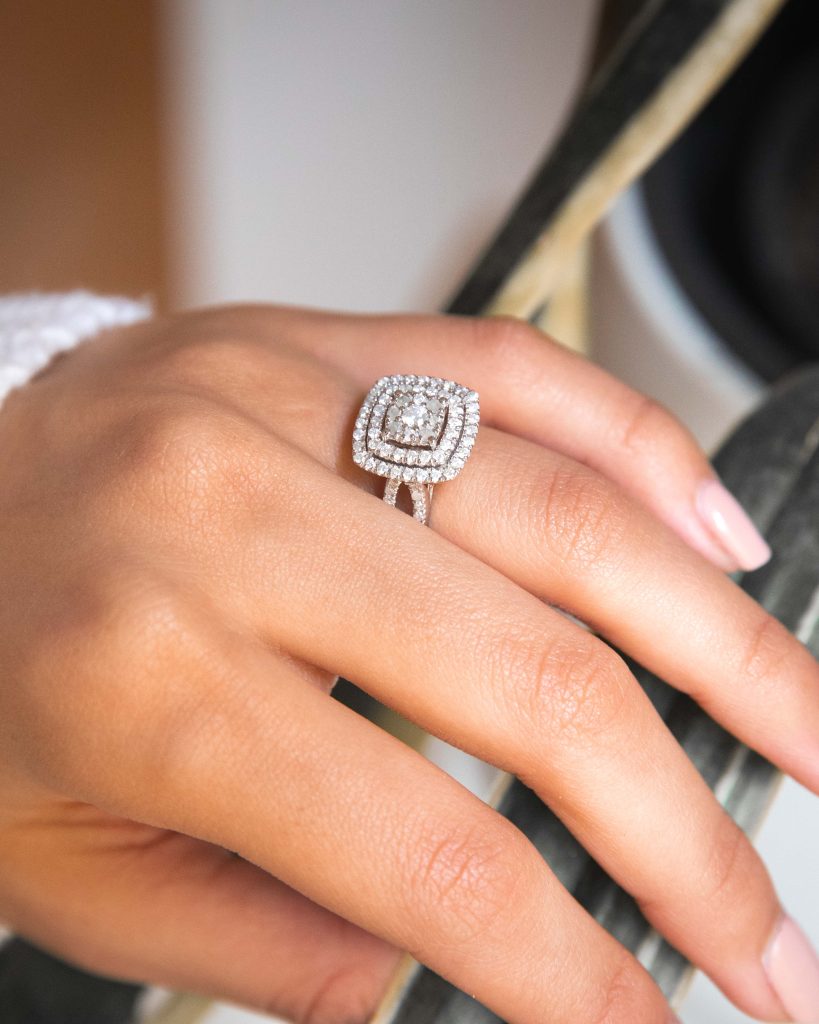
An engagement ring should be an extension of your partner’s personality, so nailing the type should be a walk in the park. When it comes to choosing other style elements such as the setting the stone sits upon as well as the metal tone that helps emphasise it, look at the other rings in your partner’s collection or subtly walk them past a jewellery counter and take note of what styles capture their attention.
The 4Cs of Diamonds
If you have decided to go with a traditional diamond engagement ring, choosing the right diamond for your engagement bling is a whole other ball game altogether. There are four things to consider when picking out the perfect diamond, they are known as the 4Cs and refer to cut, colour, carat and clarity.
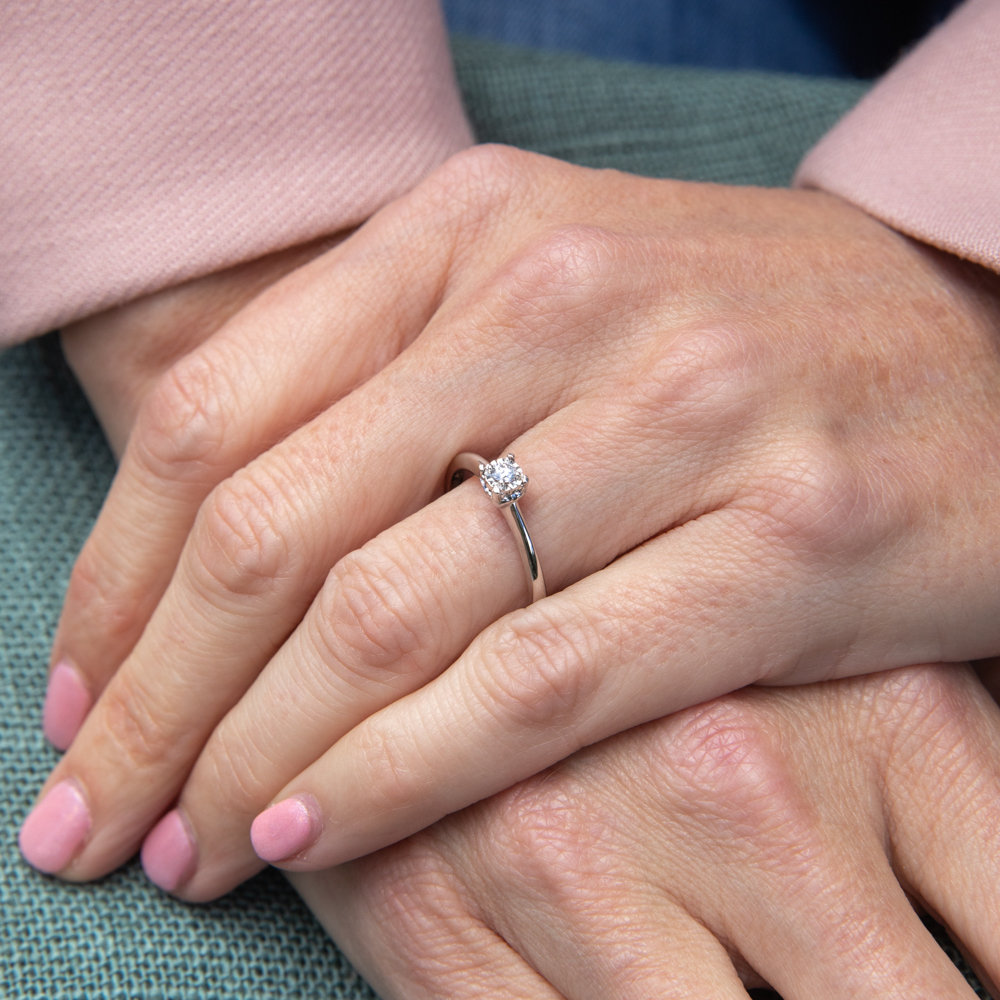
Cut:
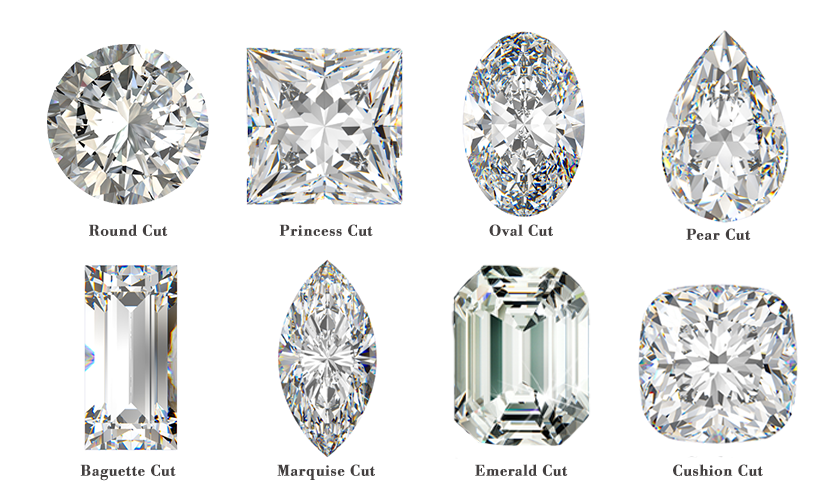
A diamond cut refers to the shape a diamond is polished into before it is sold. Style-wise, the cut of a diamond is extremely important to a diamond ring’s design as it affects how the stone refracts in the light. Diamond cuts come in all different styles with the brilliant round cut, the princess cut, oval cut, cushion cut, pear cut and emerald cut being the most popular for engagement rings.
Colour:

A diamond’s colour is pretty self-explanatory as it refers to the stone’s hue. Many people are not aware that a majority of diamonds on the market will have a slight tinge of colour, it is just not that visible under the naked eye. The less colour a diamond features the more valuable and desirable it will be, except in the case of brightly-coloured stones. Known as ‘fancies’, coloured stones come in many shades and are exceptionally rare and valuable.
Carat:
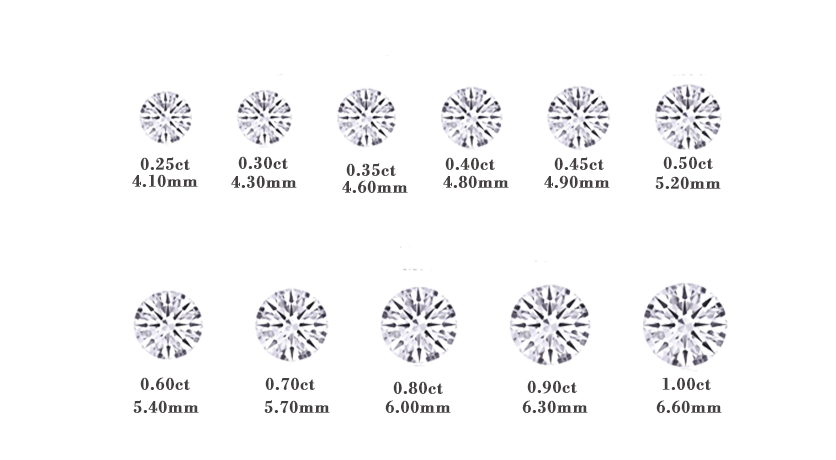
Carat is an ancient measuring unit that is used to identify a diamond’s weight and size. A diamond’s carat can drastically impact its value with larger stones tending to be more valuable. One carat is divided into 100 points with stones that are under one carat often referred to as ‘pointers’. According to Brides.com, the average engagement ring is between 1-1.50-carats.
Clarity:
A diamond’s clarity is an indication of the number of imperfections a stone may or may not have. Most diamonds have specks and hairline chips known as ‘inclusions’, they are the result of uncrystallised carbon that appear during the stone’s formation and are usually invisible to the naked eye. A diamond’s clarity is graded on a scale ranging from FL and IF (flawless and Internally Flawless) to P3 (Imperfect).
